Whiskers are a distinctive and crucial feature of your feline friend, skin to an environmental sensing system. As tactile hairs or vibrissae, they are deeply embedded in your cat’s skin and packed with nerve endings. (1)
So, do whiskers hurt when cut? While whiskers themselves don’t contain pain receptors, their deep roots are surrounded by a rich sensory organ that can make trimming them incredibly uncomfortable for your pet.
It’s like if someone snipped off the ends of your fingers—while you wouldn’t feel pain in the nails, the sensitive skin beneath would certainly notice.
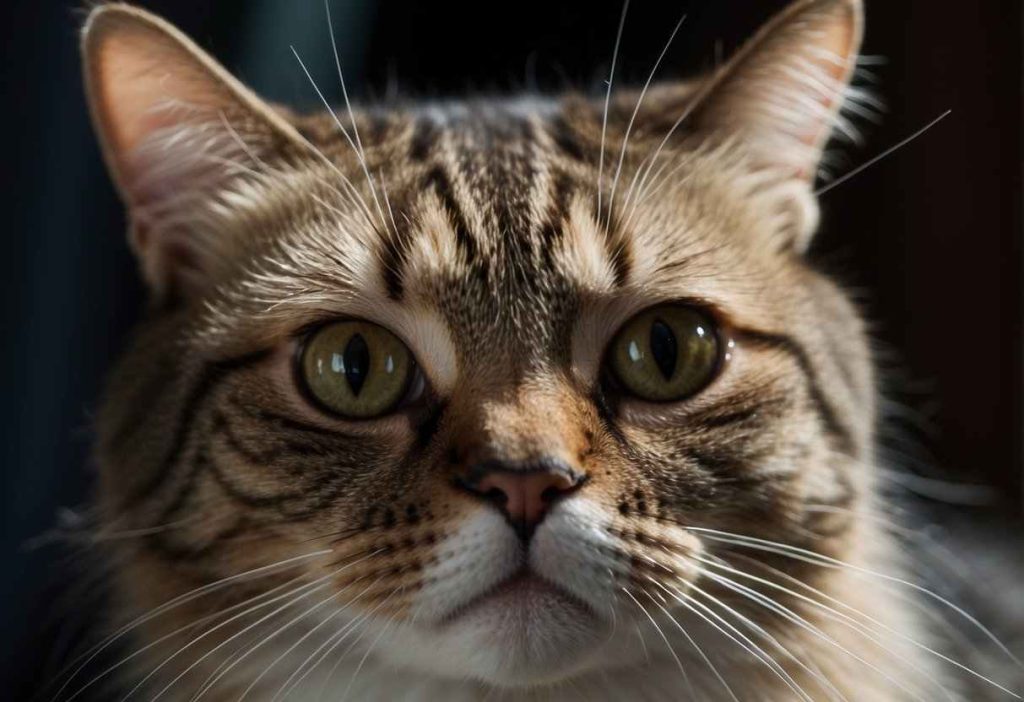
Understanding a cat’s whiskers goes beyond just knowing they are important; it involves understanding their role in your cat’s navigation and perception of the world.
Your cat’s whiskers act as radar detectors, gauging distances and sensing nearby objects—even in the dark.
These finely tuned tools play a crucial role in your cat’s confidence and ability to move through their environment.
For owners looking to strengthen their relationship with their pets, it is essential to recognize how cutting whiskers can disrupt your cat’s well-being and leave them feeling disoriented and stressed.
Armed with the right insights and practical tips, you can avoid common mistakes and ensure your cat remains happy and healthy.
Key Takeaways
- Whiskers contain sensory organs that can cause discomfort if cut.
- Cats use their whiskers for environmental perception and navigation.
- A proper understanding of whiskers helps owners care for their cats better.
Understanding, Do Cat Whiskers Hurt When Cut?
Ever wondered what’s so special about your cat’s whiskers? Unlike regular fur, cat whiskers are thicker, longer, and embedded deeper in the skin within hair follicles that are rich in nerve endings and blood vessels.
These whiskers are made of keratin, the same tough protein that makes up human hair and nails.
You’ll find these tactile hairs, called vibrissae, not just on the muzzle but also above the eyes, on the chin, and even on the backs of the front legs.
They’re so much more than mere hairs; they’re an integral part of your kitty’s sensory toolkit!
The Sensory Role of Whiskers
Imagine having a built-in radar that helps you measure air currents, sense nearby objects without touching them, or even detect the threat of a predator lurking in the dark.
That’s kinda what whiskers do for cats! These sensory tools give your feline friend a heightened awareness of their surroundings.
Whiskers are so sensitive that they can pick up on barely noticeable changes in air currents, allowing cats to navigate obstacles, even in the dark.
Whiskers are like nature’s own measuring tape for your kitty, helping determine if they can fit through tight spaces.
It’s not just about measuring though; imagine the discomfort if you had your fingertips trimmed — that’s akin to how a cat might feel if its whiskers were cut.
Here’s a fun fact: Whiskers can even change position! This provides real-time feedback on your cat’s mood. Relaxed? The whiskers might fan out sideways. On the prowl?
They’ll point forwards, locked and loaded for sensory input.
So, next time you watch your cat whisker their way around the house, just remember: those little tendrils are doing a lot more than tickling your nose; they’re helping your kitty conquer their world, one cautious step at a time.
Behavioral Insights and Relationship Building
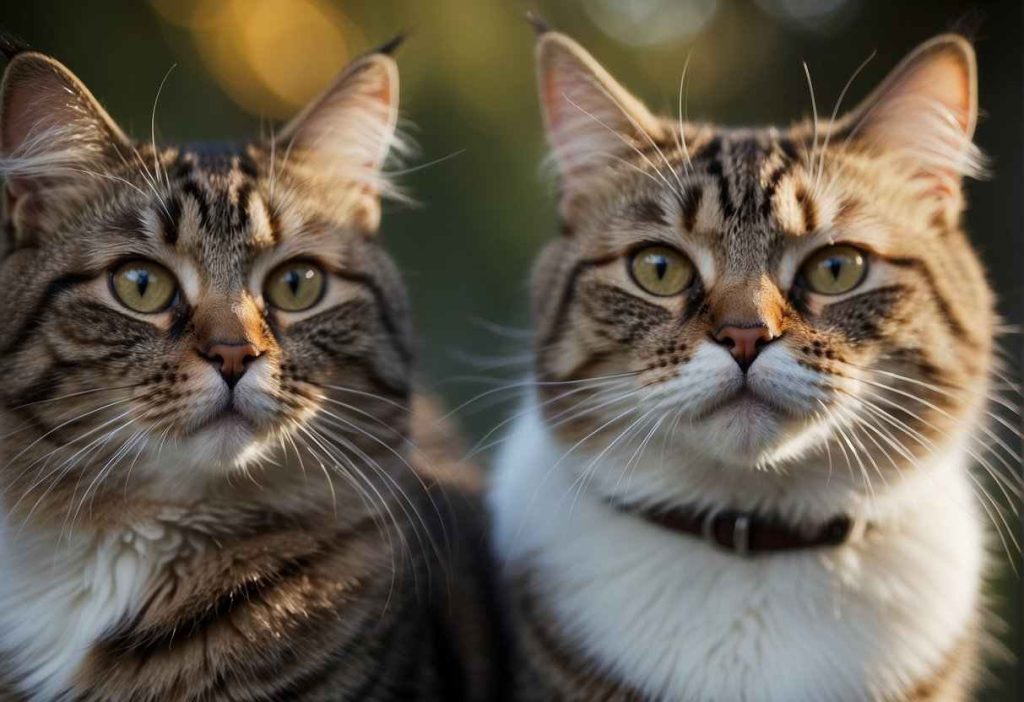
That’s whisker power at work! Whiskers, or vibrissae, aren’t just for show; they’re critical for helping cats navigate their environment.
You’ve probably noticed that these fancy sensory tools seem to give your furry friend a sixth sense, helping with balance and spatial awareness.
But what happens when we snip those mystical feelers? Cats rely heavily on the sensory information from their whiskers to understand their surroundings.
When their vibrissae are trimmed, it can disorient them, moving into familiar spaces suddenly challenging. Imagine trying to walk through your home with your eyes closed – disconcerting, right?
Your cat may experience similar confusion, leading to stress and behavioral changes. They might become less confident, more hesitant, and their usually superb coordination. Well, it might take a hit.
Strengthening Bonds with Your Cat
Ready to be the best pet parent on the block? Let’s talk about how to respect those crucial cat sensors. First off, never trim or cut your cat’s whiskers. Here are a few trust-building tips instead:
- Playtime: Engage with fishing rod toys that encourage natural hunting behaviors without threatening their whiskers.
- Safe Spaces: Provide hideaways where your cat can retreat without brushing their whiskers repeatedly.
- Gentle Touch: When petting your cat, avoid their whisker pads – some kitties are extra sensitive there!
Remember, your approach matters. Consistent, whisker-friendly interactions can make your cat feel secure and loved, strengthening the bond you share. (2)
So, want a trusty sidekick rather than a whisker-worried companion? Keep those trimmers away, and cherish the purr-fect harmony you and your whiskered pal have cultivated.
Practical Care and Interaction Tips
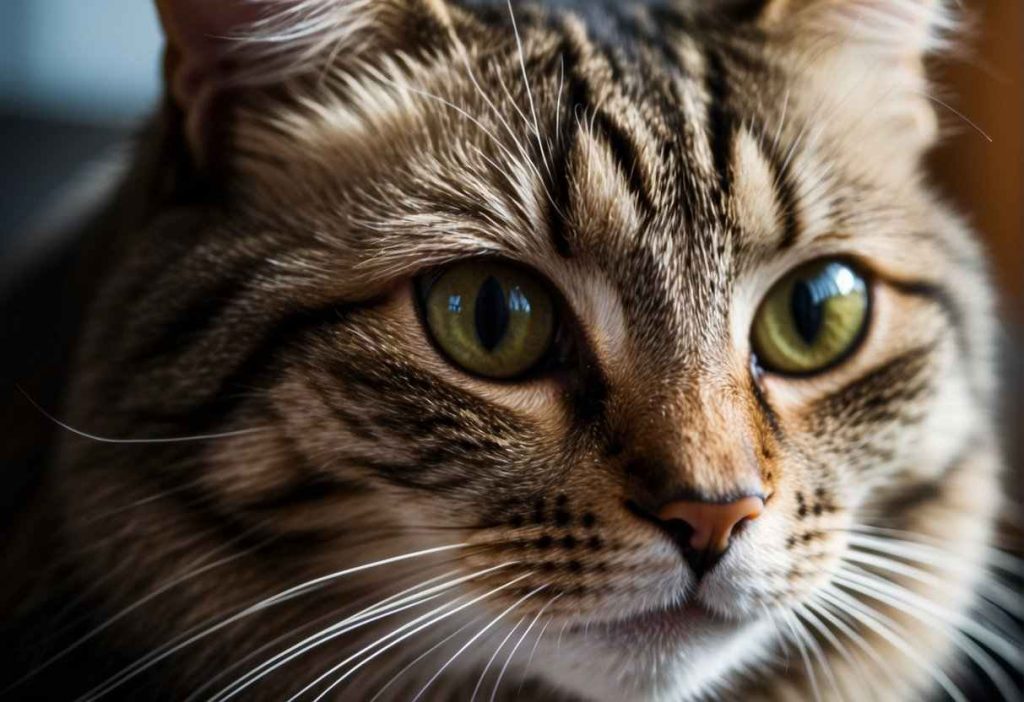
Did you know that those adorable whiskers are more than just cute? They’re vital for your cat’s spatial navigation, hunting efficiency, and mood communication. (3)
Take a minute each day to ensure your furball’s whiskers are in tip-top shape. Just a gentle once-over will do—no tugging or pulling!
Keep an eye out for any changes or damage. Cats are curious explorers and may brush against rough surfaces, but it’s your job to keep their whisker-friendly zones safe and snag-free.
Dos and Don’ts for Cat Owners
- Don’t trim or cut: Your cat’s whiskers may look like they could use a trim, but resist the urge! Cutting them off could disorient your cat and make them less nimble.
- Do provide clear pathways: Keep clutter to a minimum. Those whiskers help your cat judge space and navigate, so make it a breeze for them to slip through their favorite haunts.
- Don’t forget body language: Whiskers are mood indicators. Pinned back? Your buddy might be stressed. Fully fanned? They’re in hunting mode, alert and ready.
- Do respect their need for space: If the whiskers twitch or your cat backs off, they’re telling you they need a moment.
- Don’t ignore the signs: Changes in whisker behavior can indicate stress or illness, so keep an eye out and stay in tune with your furry friend’s health. (4)
Remember, your cat’s whiskers are a barometer of their well-being. Keep those sensory tools respected and intact, and your cat will thank you with purrs aplenty and all the quirky affection you love!
Humor, Relatability, and Well-being

Imagine walking into a room and bumping into everything; that’s your cat without its wondrous whiskers.
So, as a loyal cat owner, resist the temptation to give your feline a “whisker-cut” and prevent an accidental slapstick comedy at their expense.
Whiskers and Overall Well-being
Whiskers don’t just predict whether your cat can slip through the gap in your fence—they’re a vital health indicator. (5)
Whisker health parallels a cat’s well-being, and they require the full set to avoid discomfort, disorientation, and even anxiety. Here are tips to let those whiskers thrive:
- Observe: Notice changes in whisker positioning; it’s like cattalk for “I’m stressed” or “All’s good!”
- Touch: As tempting as it is, don’t fiddle with them—whiskers are loaded with nerves and pain sensors.
- Space: Ensure your kitty has plenty of wiggle room—narrow spaces can mean bent whiskers and added stress.
In the realm of cat care, whisker wellness is no joking matter.
Channel your inner cat: Be attentive, give space, and watch for those tell-tale whisker twitches that say, “Hey, I’m A-Okay!”
Remember, those whiskers are a cat’s built-in radar—damage them, and you might just have a furry little navigator feeling a tad lost at sea.
Expert Insights and Advanced Strategies

Vets unanimously advise against trimming cat whiskers.
They are essential tools in your cat’s sensory arsenal, and cutting them can lead to disorientation and pain due to the sensitive nerve endings at their base.
Think of whiskers like fingertips that are constantly relaying environmental information back to the brain. If they’re damaged, your furry friend’s spatial calculations can get wonky.
Injuries resulting from impaired judgment are a real possibility.
Remember, whisker health is a reflection of your cat’s overall well-being. If you notice abnormal shedding or damaged whiskers, it’s time for a vet visit to rule out underlying health issues.
Enhancing Your Cat’s Environment
Now, for the fun part – how can you optimize your home for Mr. Whiskers? Aim for an environment that allows your cat to utilize their whiskers without interference:
- Exploration-friendly Areas: Ensure there’s ample space for your cat to wander without whiskers brushing against surfaces too often.
- Whisker-width Paths: Keep pathways clear; a whisker-tickling clutter can be quite an annoyance!
- Sensory-rich Toys: Engage their curious minds with toys that encourage stalking and pouncing.
Lastly, since whiskers do occasionally fall out naturally, don’t fret if you find one. They’ll typically regrow in 3 to 6 months, as good as new. (6)
Keep your eyes peeled for any signs of distress, and you’ll be the cat’s pajamas in your pet’s eyes!
Quick Recap
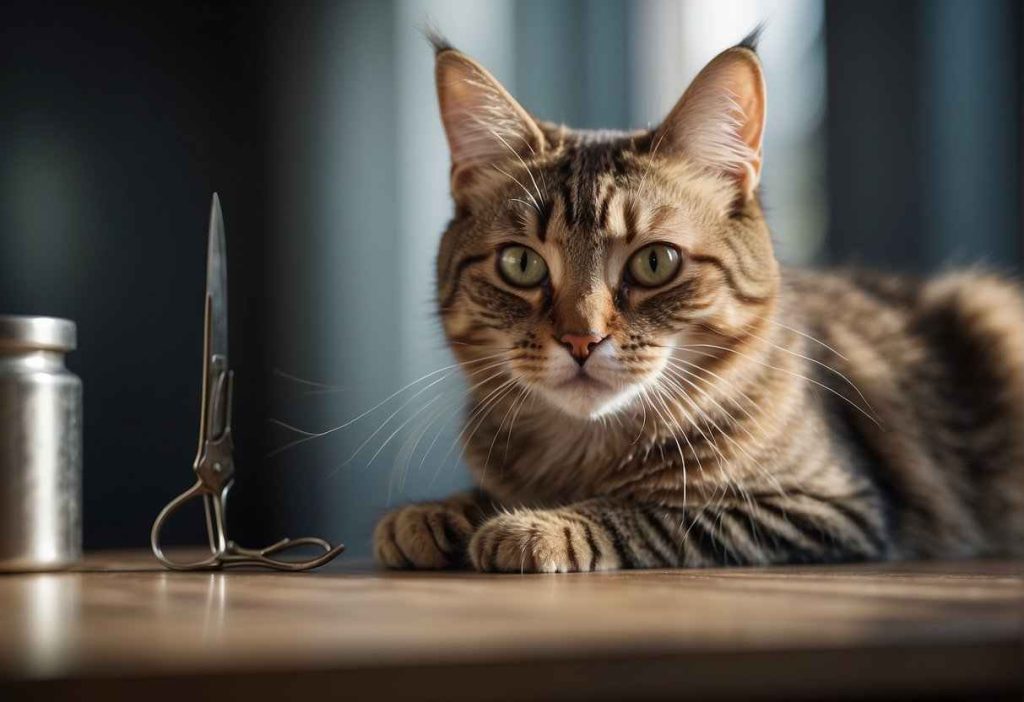
Whiskers are not just fancy cat fur. They’re sophisticated sensory tools, and your feline friend depends on them for navigation and protection from predators.
Now, have you ever wondered if whiskers fall out naturally? They sure do! Cats shed their whiskers from time to time, just as they do their coat.
But don’t worry, they grow back. Trimming or plucking, however? That’s a different story and not one with a happy ending.
- Myth: Whiskers can be trimmed like hair with no ill effects. (7)
- Fact: Trimming whiskers rob cats of a critical sensory mechanism. They could lose their graceful agility — think about stumbling around your house with your eyes closed!
- Myth: It doesn’t hurt to cut a cat’s whiskers.
- Fact: Whiskers are loaded with nerve endings, making them super sensitive. Cutting them could cause your cat discomfort or even pain.
- Myth: Cut whiskers will grow back stronger.
- Fact: While whiskers do grow back, they return as they were. No upgrades or super whiskers to see here.
Here’s something you might not have known: cats use their whiskers to sense nearby objects, almost like a natural radar. They can even pick up on changes in air current!
So, remember, keep those kitty whiskers intact. Your cat isn’t just trying to make a fashion statement — those whiskers are essential!
Frequently Asked Questions
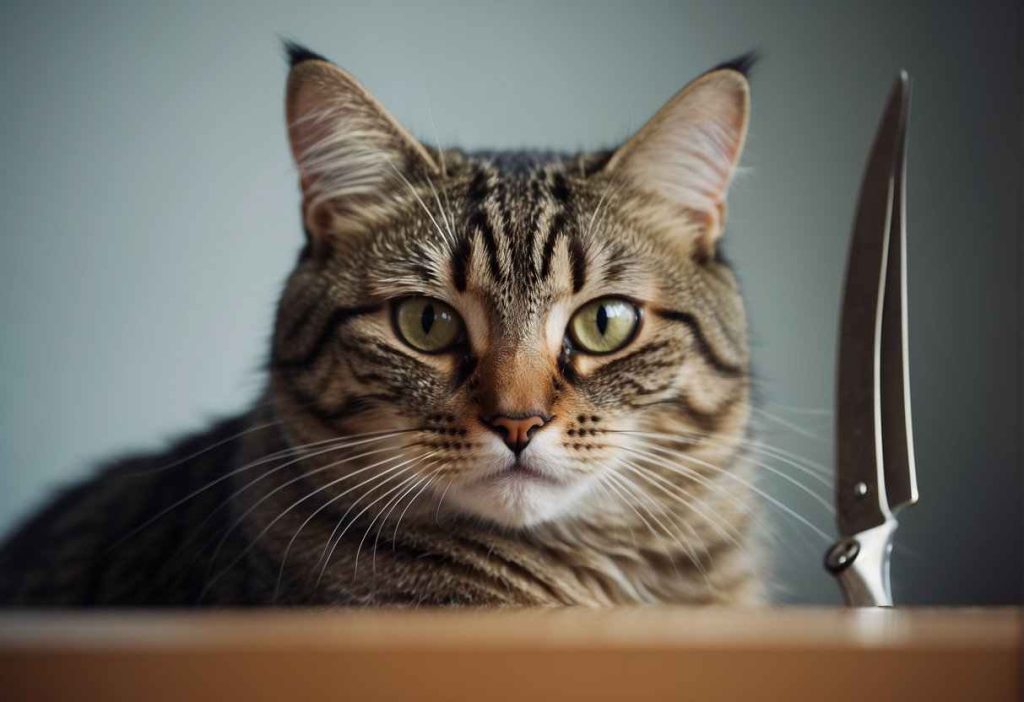
Navigating the mysterious world of cat whiskers is crucial for understanding their comfort and well-being. Let’s explore some common queries you might have about your feline friend’s sensitive whiskers.
Do cat whiskers feel pain when cut?
While the whiskers themselves don’t have pain receptors and won’t hurt if cut, they are deeply rooted in areas rich with nerves and blood vessels.
So yes, your kitty might feel discomfort if the whiskers are tampered with. It’s best to leave them be!
How can trimming whiskers affect a cat’s behavior?
Trimming a cat’s whiskers can cause disorientation and anxiety.
These sensory tools help cats judge space and distance, so without them, they might become more cautious or show signs of stress.
What should I do if my cat’s whiskers are damaged?
Keep your cat’s environment consistent if their whiskers get damaged.
That means not moving around furniture and keeping their essentials like food, water, and litter in the same spots to help them navigate.
Can whisker stress affect my cat’s health?
Absolutely! Whisker stress can lead to your cat feeling overwhelmed, particularly at mealtime if their whiskers touch the edges of a narrow bowl.
Selecting wider dishes can help prevent this stress.
How can I improve my bond with my cat, respecting their whisker sensitivity?
Be mindful of their needs and avoid touching their whiskers – it might be uncomfortable for them.
Showing respect for their space and comfort can strengthen your bond.
Are there any specific whisker-friendly toys or activities I can provide for my cat?
Yes, there are! Engage in play with toys that don’t require them to squeeze into tight spaces.
Think about fishing rod toys or laser pointers that encourage active play without putting pressure on their whiskers.


